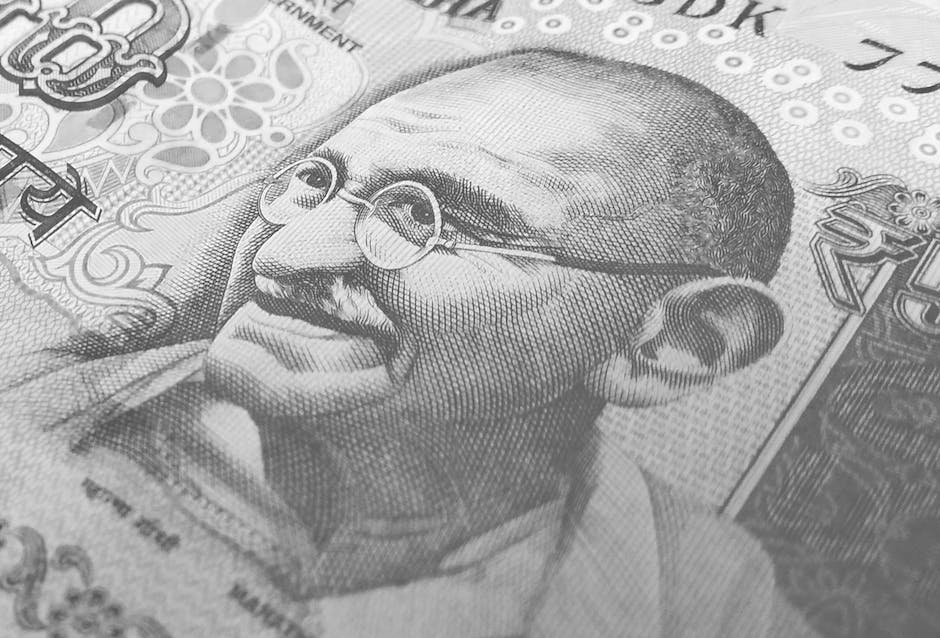Table of Contents
Breaking the Mold: The Story of Indira Gandhi’s Historic Leadership – Shattering barriers, inspiring generations.
Introduction
Breaking the Mold: The Story of Indira Gandhi’s Historic Leadership is a captivating account that delves into the life and legacy of one of India’s most influential political figures. This book explores the remarkable journey of Indira Gandhi, who shattered societal norms and became the first female Prime Minister of India. Through meticulous research and insightful analysis, the author unravels the complexities of Gandhi’s leadership style, her political achievements, and the challenges she faced in a male-dominated political landscape. Breaking the Mold offers a compelling narrative that sheds light on the indomitable spirit and trailblazing leadership of Indira Gandhi, leaving readers inspired by her enduring impact on Indian politics and women’s empowerment.
Indira Gandhi’s Early Life and Political Journey

Indira Gandhi, the first and only female Prime Minister of India, was a trailblazer in every sense of the word. Her leadership and political career were marked by determination, resilience, and a commitment to social justice. To truly understand the impact of her leadership, it is essential to delve into her early life and political journey.
Born on November 19, 1917, in Allahabad, India, Indira Gandhi was the only child of Jawaharlal Nehru, who would later become the first Prime Minister of India. Growing up in a politically active household, she was exposed to the intricacies of Indian politics from a young age. Her father’s influence and guidance played a significant role in shaping her political aspirations.
Indira Gandhi’s political journey began in the 1930s when she joined the Indian National Congress, the country’s largest political party. She actively participated in the freedom struggle against British colonial rule, organizing protests and rallies. Her dedication and commitment to the cause earned her the respect and admiration of her peers.
In 1942, Indira Gandhi married Feroze Gandhi, a fellow member of the Indian National Congress. Despite her marriage, she continued to be actively involved in politics, refusing to let her personal life hinder her political ambitions. Her determination and passion for social justice propelled her forward, and she quickly rose through the ranks of the party.
Indira Gandhi’s political career took a significant turn in 1966 when she was appointed as the Minister of Information and Broadcasting in the government of Prime Minister Lal Bahadur Shastri. This marked her entry into the highest echelons of power, and she soon became a prominent figure in Indian politics.
Tragedy struck in 1966 when Prime Minister Shastri passed away suddenly. The Indian National Congress, recognizing Indira Gandhi’s leadership potential, elected her as the party’s leader and the country’s Prime Minister. This historic moment made her the first woman to hold such a position in India.
As Prime Minister, Indira Gandhi faced numerous challenges, both domestically and internationally. She implemented a series of economic reforms aimed at reducing poverty and improving the lives of the marginalized sections of society. Her policies, known as the “Garibi Hatao” (Eradicate Poverty) campaign, focused on land redistribution, nationalization of banks, and the promotion of rural development.
However, Indira Gandhi’s leadership was not without controversy. In 1975, she declared a state of emergency, suspending civil liberties and imposing strict censorship on the media. This move was met with widespread criticism and protests, as many saw it as an abuse of power. Nevertheless, she lifted the emergency in 1977 and called for fresh elections, which she ultimately lost.
Despite the setbacks, Indira Gandhi remained a formidable force in Indian politics. She returned to power in 1980, serving as Prime Minister until her assassination in 1984. Her leadership during this period was marked by a focus on national security and foreign policy, particularly in relation to the ongoing conflict with Pakistan.
Indira Gandhi’s early life and political journey laid the foundation for her historic leadership. From her upbringing in a politically active household to her rise through the ranks of the Indian National Congress, she demonstrated a relentless commitment to social justice and equality. While her leadership was not without controversy, her impact on Indian politics and society cannot be understated. Indira Gandhi broke the mold, paving the way for future generations of women leaders in India and around the world.
The Impact of Indira Gandhi’s Leadership on India’s Economy
Indira Gandhi, the first and only female Prime Minister of India, left an indelible mark on the nation’s history. Her leadership was characterized by a strong and decisive approach, which had a profound impact on various aspects of Indian society. One area where her influence was particularly significant was the economy.
When Indira Gandhi assumed office in 1966, India was facing numerous economic challenges. The country was grappling with high inflation, a stagnant industrial sector, and a growing population. Gandhi recognized the urgent need for economic reforms and embarked on a series of measures to revitalize the Indian economy.
One of the key initiatives undertaken by Gandhi was the nationalization of banks. In 1969, she nationalized 14 major private banks, effectively bringing them under government control. This move aimed to ensure that credit was made available to sectors that were previously neglected, such as agriculture and small-scale industries. By providing financial support to these sectors, Gandhi sought to promote inclusive growth and reduce income disparities.
Another significant step taken by Gandhi was the implementation of the Green Revolution. This agricultural program aimed to increase food production through the adoption of modern farming techniques and the use of high-yielding varieties of crops. The Green Revolution not only helped India achieve self-sufficiency in food production but also transformed the country into a major exporter of agricultural products. This boost in agricultural productivity had a positive ripple effect on the overall economy, as it generated employment opportunities and increased rural incomes.
Gandhi also played a crucial role in promoting the growth of heavy industries in India. Under her leadership, the government established public sector enterprises in sectors such as steel, coal, and oil. These industries not only contributed to the country’s industrial development but also provided employment opportunities for millions of Indians. By prioritizing the growth of heavy industries, Gandhi aimed to reduce India’s dependence on imports and build a self-reliant economy.
In addition to these specific initiatives, Gandhi’s leadership style and policies had a broader impact on India’s economy. Her strong and decisive approach instilled confidence among investors and entrepreneurs, leading to increased investment in various sectors. This, in turn, stimulated economic growth and created new job opportunities. Moreover, Gandhi’s emphasis on social welfare programs, such as the expansion of healthcare and education, helped improve the overall quality of human capital in the country. A well-educated and healthy workforce is essential for sustained economic development.
However, it is important to note that Gandhi’s economic policies were not without criticism. Some argue that her focus on public sector enterprises led to inefficiencies and a lack of competition in the economy. Additionally, her policies were criticized for their heavy reliance on government intervention and control, which some believed stifled private sector growth and innovation.
Despite these criticisms, there is no denying the significant impact of Indira Gandhi’s leadership on India’s economy. Her bold and visionary approach laid the foundation for the country’s economic growth and development. Today, India is one of the fastest-growing economies in the world, and much of its success can be attributed to the policies and reforms initiated by Gandhi. Her legacy as a trailblazing leader continues to inspire generations of Indian women and serves as a reminder of the transformative power of strong and visionary leadership.
Indira Gandhi’s Role in Shaping India’s Foreign Policy
Indira Gandhi, the first and only female Prime Minister of India, is widely recognized for her historic leadership and significant contributions to the country’s development. While her tenure was marked by both praise and criticism, there is no denying the impact she had on shaping India’s foreign policy.
One of the key aspects of Indira Gandhi’s leadership was her focus on non-alignment. During the Cold War era, when the world was divided into two major blocs led by the United States and the Soviet Union, India under Gandhi’s guidance chose to remain neutral and independent. This policy allowed India to maintain friendly relations with both superpowers while pursuing its own national interests.
Under Gandhi’s leadership, India played a crucial role in the Non-Aligned Movement (NAM), a group of countries that advocated for the rights of developing nations and opposed imperialism and colonialism. As a prominent member of NAM, India actively participated in international forums and conferences, voicing the concerns and aspirations of the global South. Gandhi’s commitment to non-alignment helped India establish itself as a key player in international politics and gain respect on the global stage.
Another significant aspect of Indira Gandhi’s foreign policy was her emphasis on regional cooperation. She recognized the importance of building strong relationships with neighboring countries to ensure peace and stability in the region. Gandhi played a pivotal role in the creation of the South Asian Association for Regional Cooperation (SAARC) in 1985, which aimed to promote economic and cultural cooperation among South Asian nations. This initiative demonstrated her vision for a united and prosperous South Asia.
Gandhi also made significant efforts to strengthen India’s ties with other countries outside the region. She sought to diversify India’s foreign relations by reaching out to countries in Africa, Latin America, and the Middle East. By doing so, she aimed to reduce India’s dependence on the superpowers and forge new alliances based on mutual interests and shared values.
One of the most notable achievements of Indira Gandhi’s foreign policy was her role in the liberation of Bangladesh in 1971. During the Bangladesh Liberation War, Gandhi provided crucial support to the Bengali nationalists fighting for independence from Pakistan. India’s military intervention played a decisive role in the conflict, leading to the creation of an independent Bangladesh. This bold move not only showcased India’s military capabilities but also solidified its position as a regional power.
However, it is important to note that Indira Gandhi’s foreign policy was not without its controversies. Her decision to conduct a nuclear test in 1974, known as the “Smiling Buddha,” drew international criticism and strained India’s relations with some countries. Additionally, her handling of the Sikh separatist movement in Punjab in the 1980s led to a tragic and violent episode in Indian history.
In conclusion, Indira Gandhi’s leadership had a profound impact on India’s foreign policy. Her commitment to non-alignment, regional cooperation, and diversification of alliances helped India establish itself as a respected player in international politics. While her tenure was not without challenges and controversies, Gandhi’s contributions to shaping India’s foreign policy cannot be overlooked. Her legacy continues to inspire leaders around the world, breaking the mold and paving the way for future generations.
The Legacy of Indira Gandhi’s Leadership in Indian Politics
Indira Gandhi, the first and only female Prime Minister of India, left an indelible mark on the country’s political landscape. Her leadership style and policies continue to shape Indian politics to this day. This article will delve into the legacy of Indira Gandhi’s leadership in Indian politics, exploring the key aspects that made her a trailblazer and examining the lasting impact of her tenure.
One of the most significant aspects of Indira Gandhi’s leadership was her ability to break the mold and challenge traditional gender roles. In a male-dominated political arena, she defied societal expectations and rose to the highest office in the land. Her ascent to power shattered the glass ceiling for women in Indian politics, inspiring generations of female leaders to follow in her footsteps.
Gandhi’s leadership was characterized by her strong-willed and decisive nature. She was known for her unwavering determination and willingness to take bold actions. This was evident in her declaration of a state of emergency in 1975, a move that suspended civil liberties and granted her sweeping powers. While controversial, this decision showcased her resolve to maintain stability and assert her authority in the face of political unrest.
During her tenure, Gandhi implemented a number of policies that aimed to uplift the marginalized and address social inequalities. The Garibi Hatao (Eradicate Poverty) campaign was one such initiative, which sought to alleviate poverty and improve the living conditions of the poor. Although the success of this program is debated, it demonstrated Gandhi’s commitment to social justice and her desire to bridge the gap between the rich and the poor.
Another hallmark of Gandhi’s leadership was her focus on national security and foreign policy. She navigated India through turbulent times, including the Bangladesh Liberation War and the Indo-Pakistani War of 1971. Her strong stance against external threats and her efforts to safeguard India’s interests earned her the respect of the international community.
However, Gandhi’s leadership was not without controversy. Critics argue that her authoritarian tendencies and disregard for democratic principles undermined the very fabric of Indian democracy. The state of emergency, in particular, was seen as a dark chapter in Indian history, marked by censorship, human rights abuses, and political repression. These actions tarnished her legacy and raised questions about the limits of power in a democratic society.
Despite the criticisms, Indira Gandhi’s leadership left an indelible impact on Indian politics. Her ability to break barriers and challenge the status quo paved the way for future female leaders. Her policies, though flawed, attempted to address social inequalities and uplift the marginalized. Her focus on national security and foreign policy ensured India’s place on the global stage.
In conclusion, Indira Gandhi’s leadership in Indian politics was historic and transformative. Her ability to break the mold and challenge traditional gender roles inspired generations of female leaders. While her tenure was not without controversy, her policies and actions continue to shape Indian politics to this day. Indira Gandhi’s legacy serves as a reminder of the power of leadership and the lasting impact it can have on a nation.
Q&A
1. What is “Breaking the Mold: The Story of Indira Gandhi’s Historic Leadership” about?
“Breaking the Mold: The Story of Indira Gandhi’s Historic Leadership” is a book about the life and leadership of Indira Gandhi, focusing on her groundbreaking achievements and impact on Indian politics.
2. Who is the author of “Breaking the Mold: The Story of Indira Gandhi’s Historic Leadership”?
The author of “Breaking the Mold: The Story of Indira Gandhi’s Historic Leadership” is Lavanya Vemsani.
3. What are some key themes explored in “Breaking the Mold: The Story of Indira Gandhi’s Historic Leadership”?
Some key themes explored in “Breaking the Mold: The Story of Indira Gandhi’s Historic Leadership” include gender and leadership, political power dynamics, and the challenges faced by women in positions of authority.
4. What is the significance of Indira Gandhi’s leadership in Indian history?
Indira Gandhi’s leadership is significant in Indian history as she was the first female Prime Minister of India and played a crucial role in shaping the country’s political landscape. Her policies and actions had a lasting impact on India’s development and international relations.
Conclusion
In conclusion, “Breaking the Mold: The Story of Indira Gandhi’s Historic Leadership” sheds light on the remarkable leadership of Indira Gandhi, who defied societal norms and became the first female Prime Minister of India. The book highlights her political achievements, challenges, and the impact she had on Indian politics and society. Indira Gandhi’s leadership style and determination to bring about social and economic reforms have left a lasting legacy in India’s history.




